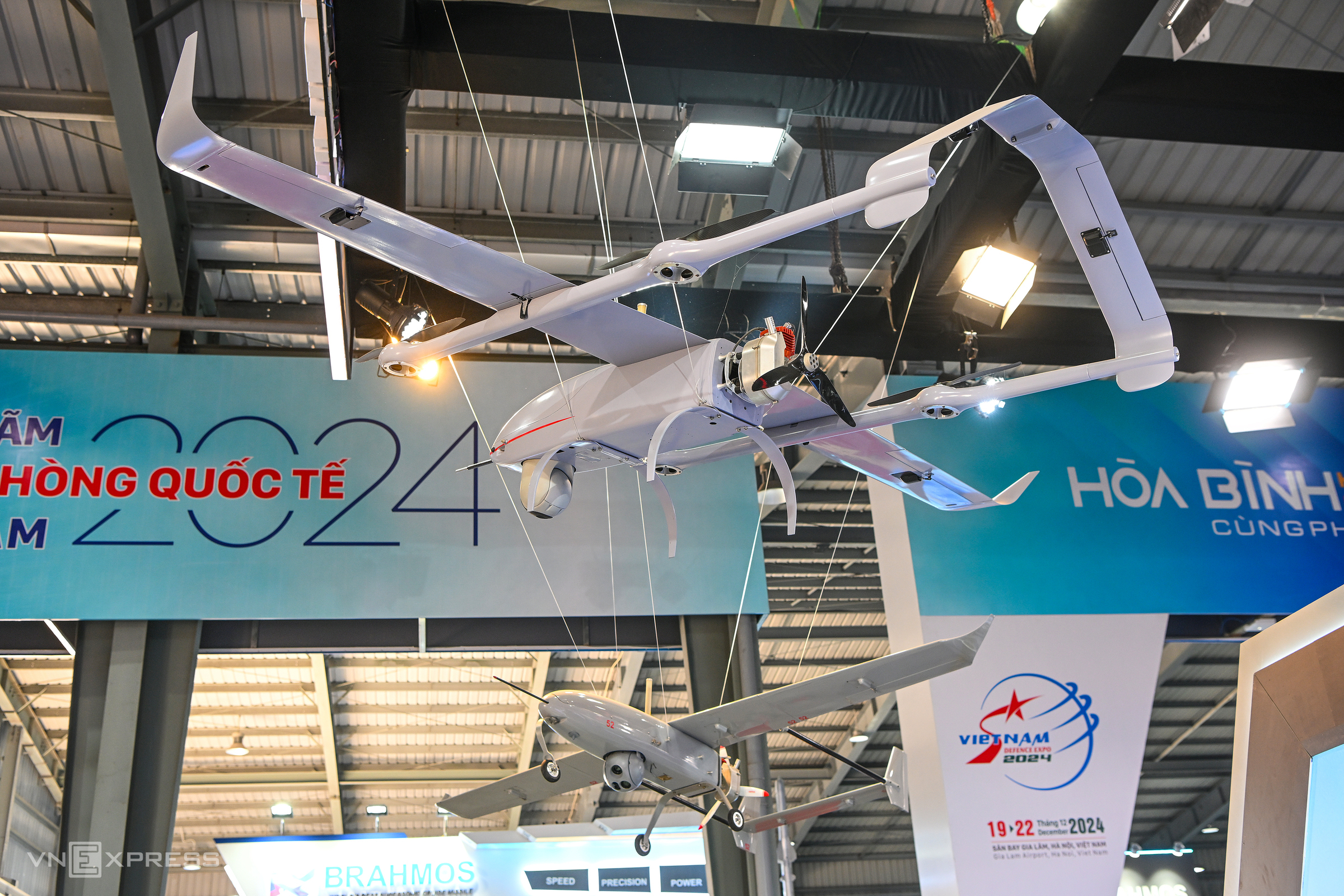During its mid-2025 session, the National Assembly passed a series of laws related to science, technology, and innovation. These mark a significant shift from a "request-grant" system to a results-oriented approach, and from procedure-heavy administration to creating a market for scientific research, positioning science and technology as a central driver of national development.
The Government and the Ministry of Science and Technology are implementing programs to enact these new laws. These include assigning research tasks to localities focused on solving regional practical problems, encouraging businesses to invest in technological innovation, and forming regional innovation ecosystems. Experts believe this ushers in a new era for Vietnamese science and technology, where the state plays a facilitating role, businesses lead innovation, and localities actively implement projects.
 |
The Nano and Energy Center at Hanoi National University's College of Natural Sciences, a hub for semiconductor training and research. Photo: Giang Huy |
The Nano and Energy Center at Hanoi National University's College of Natural Sciences, a hub for semiconductor training and research. Photo: Giang Huy
Managing for results, full cost accounting
A major breakthrough in the newly passed Law on Science, Technology and Innovation is the change in state management of scientific research. Instead of controlling processes and inputs like receipts and invoices, the Law shifts to managing results and output effectiveness. Scientific work is recognized as inherently risky, but must be coupled with risk management. The focus is no longer on implementation methods but on practical value and impact on socio-economic development.
The Ministry of Science and Technology is tasked with measuring the overall effectiveness of scientific programs and tasks, using the results as a basis for budget allocation. Research institutions will only receive new tasks if they demonstrate effectiveness from previous ones.
The Law also empowers organizations, individuals, and project leaders with greater autonomy, from managing their apparatus and selecting personnel to expenses under a full cost accounting mechanism. In return, they must be accountable and transparent in resource utilization. Crucially, organizations and individuals carrying out tasks own the research results for commercialization.
Researchers will receive at least 30% of the income from commercializing results and are exempt from or receive reduced personal income tax on this income. This aims to promote a spirit of responsibility, linking research with practical application.
The Law also shifts the focus of technological development to the business sector. Businesses are not only encouraged to invest in research and development with their own resources, but are also incentivized by the state budget based on the principle of "investing 1 dong to attract 3 to 4 dong from society".
The proportion of the state budget allocated to supporting businesses' R&D activities will increase significantly from 10% to 70-80%. Additionally, businesses can now include all R&D expenses in their production and business costs, without being limited by revenue ratios as before.
Minister of Science and Technology Nguyen Manh Hung stated that traditional growth drivers like labor, resources, and land have reached their limits. To achieve double-digit growth, Vietnam must seek new drivers from science, technology, innovation, and digital transformation.
He emphasized that businesses must innovate technologically to compete and invest in research and development to lead. Around 25 trillion dong from the state budget will be allocated annually to support businesses in technological innovation, mainly through interest rate subsidies. A national fund for technological innovation will be established to implement this policy.
 |
Various unmanned aerial vehicles developed by Viettel Group. Photo: Giang Huy |
Various unmanned aerial vehicles developed by Viettel Group. Photo: Giang Huy
Moving towards mastering nuclear power technology
The amended Atomic Energy Law, passed during the National Assembly's 9th session, affirms the policy of developing nuclear energy for peaceful purposes to serve socio-economic development and ensure long-term energy security.
Accordingly, the state prioritizes the transfer and application of advanced, high, and environmentally friendly technologies, while aiming to enhance manufacturing capacity and localize equipment, gradually mastering nuclear power technology. This forms the basis for a national nuclear industry.
The Law stipulates that the state budget will support nuclear energy research and development. There will be preferential policies for training, attracting, and employing human resources, and investing in facilities, equipment, and laboratories for research institutes and specialized training centers.
Addressing the National Assembly, Minister Nguyen Manh Hung highlighted nuclear power as green energy and a growing trend globally. Several countries aim for nuclear power to contribute 10% to 30% of their national electricity supply to achieve carbon neutrality, energy independence, and redefine national technology.
The new Law provides a legal framework for Vietnam to master nuclear energy technology, develop a domestic market for technology, equipment, and radioactive substances, and apply them widely in various sectors, from healthcare and agriculture to industry.
Opening doors for talent in the public sector
The amended Law on Officials and Public Employees allows state agencies to contract with experts, scientists, lawyers, and prominent entrepreneurs to perform certain leadership and management tasks. This aims to attract high-quality human resources to meet the demands of public administration reform.
State agencies can also contract services for specific tasks in cases of human resource shortages. The state budget guarantees funding for this, independent of regular salary and administrative expense funds. The government will issue specific criteria and conditions for each contracted group, depending on the needs and characteristics of each agency.
This policy is expected to flexibly and efficiently supplement the public administration with talented individuals without creating new types of public employees while meeting the need for high expertise in key areas.
The Law also introduces mechanisms to attract talented individuals to work in Party, State, Fatherland Front, and socio-political organizations. The target group includes experts, scientists, entrepreneurs, and outstanding students who have made substantial contributions to national development.
Previously, General Secretary To Lam assigned the Ministry of Home Affairs to coordinate with other ministries and sectors to develop policies to attract domestic and international talent, focusing on key technological fields like artificial intelligence, semiconductors, and new materials. He requested improved incentives in terms of salary, housing, and working environment to bring at least 100 leading experts to work in the country by August.
As defined by the Law, talented individuals are officials and public employees with outstanding expertise, innovative thinking, and a track record of creating valuable products that contribute to the common good. They will receive special incentives funded by the state budget. The government will define a framework for consistent implementation across the public service system.
 |
Missiles, launchers, and air defense radar on display at the 2024 Defense Exhibition. Photo: Giang Huy |
Missiles, launchers, and air defense radar on display at the 2024 Defense Exhibition. Photo: Giang Huy
Empowering localities
To implement the new policies on science, technology, and innovation, the Government issued Decree 180/2025, allowing public-private partnerships in high-tech and strategic technology projects, digital infrastructure development, human resource training, and the establishment of research institutes and specialized technology centers.
Organizations and individuals participating in this model will receive tax incentives, land use and rental exemptions, and ownership of research results for further development and commercialization. The State can commission or designate bids for products resulting from public-private partnerships in science and technology.
Previously, the Government also issued Decrees 132 and 133 to clarify authority and promote decentralization in science and technology management. This concretizes the two-tiered government model, eliminating the district level, with the orientation of "localities decide, localities do, localities take responsibility".
According to the Ministry of Science and Technology, 52.5% of all tasks and powers currently managed by the central government (117 out of 223) will be delegated to localities. Decree 133 specifies 78 tasks, while the remaining 39 will be detailed in forthcoming legal documents.
Provincial People's Committees are granted more authority, including managing intellectual property, approving technology transfers, and permitting the establishment of science and technology organizations with foreign capital. Major programs previously under the Prime Minister's authority, such as the National Technology Innovation Program, science and technology market development, and technology import, are now assigned to the Minister of Science and Technology.
Provincial People's Committees are also tasked with training and guiding high-tech zone management boards and consulting the Prime Minister on products from high-tech investment projects.
Son Ha












